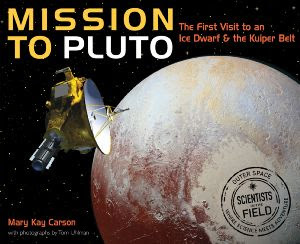Mary Kay Carson's Blog, page 6
September 1, 2017
Creative Playtime → Sail Your Skateboard!
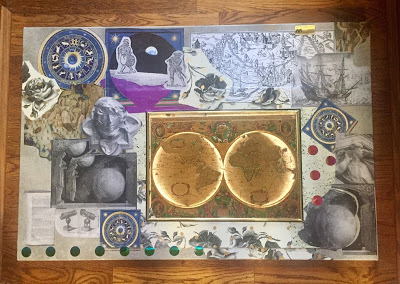
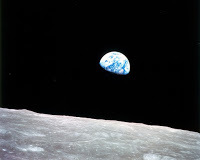 I’ve been playing with collage this week. Our kitchen island is a mashup of canvas, papers, found objects, Modpodge©, and Fedex© printouts which don’t run when wet. I started with a rummage sale treasure, a metal world map which I glued to a long piece of canvas sprayed lightly in gold and silver.
I’ve been playing with collage this week. Our kitchen island is a mashup of canvas, papers, found objects, Modpodge©, and Fedex© printouts which don’t run when wet. I started with a rummage sale treasure, a metal world map which I glued to a long piece of canvas sprayed lightly in gold and silver.
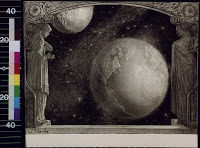 I added papers of all kinds plus images: snaps from our Italian trip plus photos from my books on England's Queen Elizabeth I and Isaac Newton. I’m no artist, but this cutting and pasting is rather therapeutic, and my mind went on its own trip. A theme appeared: the moon (thank you #SolarEclipse2017) and sailing ships.
I added papers of all kinds plus images: snaps from our Italian trip plus photos from my books on England's Queen Elizabeth I and Isaac Newton. I’m no artist, but this cutting and pasting is rather therapeutic, and my mind went on its own trip. A theme appeared: the moon (thank you #SolarEclipse2017) and sailing ships.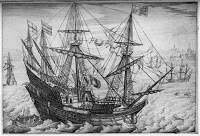
I got to thinking about the Spanish Armada, which the Kingdom of Spain launched in May 1588 in hopes of taking out Queen Elizabeth’s navy, invading England, and thereby asserting its standing as the world’s Supreme Power.
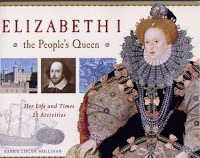 That didn’t happen, given a series of unfortunate (to Spain) events including superior seamanship on England’s part, plus the weather, which drove the Armada north when it wanted to go south. Eventually the Armada sailed into a storm off Ireland’s west coast that destroyed ships and left sailors stranded in Ireland. They mingled their genes among the local population, and their dark-haired, blue-eyed descendants are now the “Black Irish.”
That didn’t happen, given a series of unfortunate (to Spain) events including superior seamanship on England’s part, plus the weather, which drove the Armada north when it wanted to go south. Eventually the Armada sailed into a storm off Ireland’s west coast that destroyed ships and left sailors stranded in Ireland. They mingled their genes among the local population, and their dark-haired, blue-eyed descendants are now the “Black Irish.”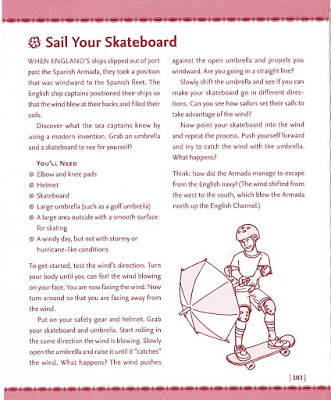 Thinking about the Armada led to this blog post. See what you can do with an umbrella when the wind picks up.
Thinking about the Armada led to this blog post. See what you can do with an umbrella when the wind picks up. From Elizabeth I: the People’s Queen, "Sail Your Skateboard” (and learn a bit about the Spanish Armada.)
ps...I still have coats of gel and spray paint to add to my collage. That will be the hard part!
Published on September 01, 2017 07:42
August 31, 2017
It’s Not Too Late to Explore the Wonder of the Great American Eclipse
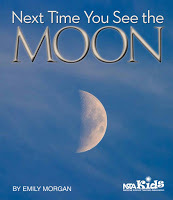 Click to buy in print or ebook.by guest-blogger Emily Morgan
Click to buy in print or ebook.by guest-blogger Emily MorganThe excitement and wonder of the Great American Eclipse can last long past August 21st. It is an event that many students will remember for a lifetime and provides marvelous learning opportunities that we can take advantage of in the days and weeks to come.
I visited a local school to watch the eclipse with students and have been following up with some modeling activities and a read aloud. It’s been over a week since the eclipse, but the excitement of it all is still with us! The eclipse follow-up activities we did are described below.
Here’s what we’ve been doing in the days after the eclipse:
Observations: First, we discussed our observations – the orange and black circles overlapping in our solar eclipse glasses, the sky getting darker, the air around us getting cooler, and so on. We talked about how the Sun looked was a crescent shape during the eclipse, which then led us into a discussion about the Moon’s different shapes, or phases.
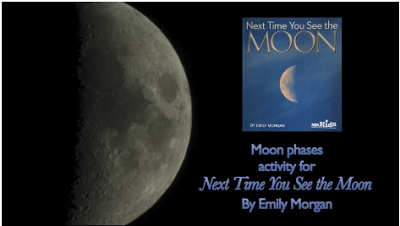 Click to go to the YouTube video.
Click to go to the YouTube video.
Modeling the Moon Phases: Next, we introduced the question, “What Moon phase must it be for a solar eclipse to occur?” In order to answer, we first explored the Moon phases with a modeling activity using white Styrofoam balls represent the Moon, a lamp to represent the Sun, and students’ heads representing Earth. Through this activity, they learned that the Moon’s phases are caused by the Moon’s orbit around Earth, that the Moon phases occur in a pattern, and that the phases have names – New Moon, Quarter Moon, Gibbous Moon, and Full Moon. A full description of this modeling activity and a YouTube video showing the activity can be found at this link. I like to show the beginning of the video to students first, pause it at about 1:47 and stop to do the activity. Then, we watch the rest of the video.
Read-Aloud: After the activity, we read the book Next Time You See the Moon and refer to the Styrofoam ball modeling activity throughout the read-aloud. The book explains that the Moon’s phases are caused by the Moon’s orbit around the Sun – that half of the Moon is always lit by the sun, and we see different parts of the side reflecting light as the Moon travels around our planet.
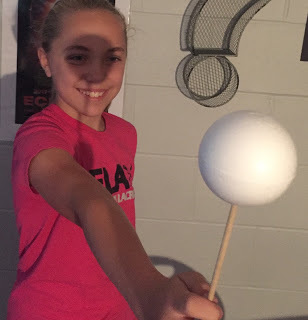 Modeling a solar eclipse.Modeling the Eclipse: After the read-aloud, students were challenged to use the same Sun-Moon-Earth model to represent a solar eclipse. Students were given time to figure out that the Moon must be positioned between the Sun and the Earth during a solar eclipse and that in order for the Moon to be in that position, it must be a New Moon. We also observed the circular shadow of the Moon on Earth (our faces) during a solar eclipse and discussed the fact that the solar eclipse was not visible to everyone on Earth, just those of us in the shadow. Finally, we watched satellite footage of the Moon’s shadow moving across the United States on August 21st and related that footage to our model.
Modeling a solar eclipse.Modeling the Eclipse: After the read-aloud, students were challenged to use the same Sun-Moon-Earth model to represent a solar eclipse. Students were given time to figure out that the Moon must be positioned between the Sun and the Earth during a solar eclipse and that in order for the Moon to be in that position, it must be a New Moon. We also observed the circular shadow of the Moon on Earth (our faces) during a solar eclipse and discussed the fact that the solar eclipse was not visible to everyone on Earth, just those of us in the shadow. Finally, we watched satellite footage of the Moon’s shadow moving across the United States on August 21st and related that footage to our model. More Questions: As always with science, the more you learn, the more questions you have, so we generated and explored more questions like:
• Why don’t we have a solar eclipse at every New Moon?
• How often does a solar eclipse happen?
• How does the size of the Moon compare to the size of the Sun?
• How far away are the Sun and the Moon from Earth?
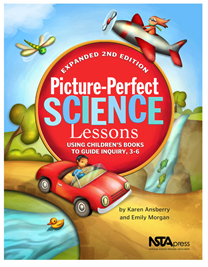 Click to buy in print or ebook.
Click to buy in print or ebook.I hope you will consider trying this modeling activity with your students, and I hope that the wonder of the Great American Eclipse stays with you all for a very long time.
If you'd like a complete 5-E lesson (Engage, Explore, Explain, Elaborate, Evaluate) about the phases of the Moon, see Chapter 17: The Changing Moon in the Picture-Perfect Science Lessons from National Science Teachers Association Press.
Published on August 31, 2017 22:00
August 2, 2017
7 Tips For Visiting Civil War Battlefields
by Brandon Marie Miller
I'm working hard on a new middle grade book about Robert E. Lee! As part of my research, this past spring I visited Lee sites across Virginia including four Civil War battlefields. I've visited many such places over the years and find them beautiful and haunting. Today, it's difficult to remember the suffering and carnage that happened on these battlefields. They are lovely places to stroll or hike. But let's not forget the real stories of what happened.
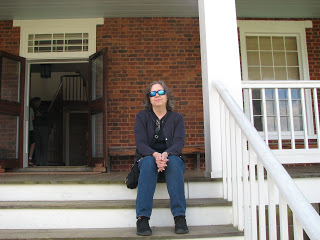 Pondering things at the McLean House where Lee surrendered.
Pondering things at the McLean House where Lee surrendered.
Appomattox Court House National Historical Park.
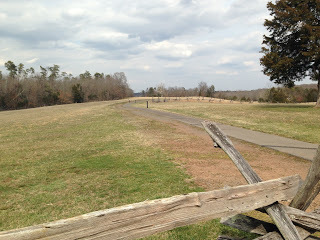 Manassas National Battlefield Park where two major battles took place.
Manassas National Battlefield Park where two major battles took place.
Here are a few tips for taking in the history of these national treasures.
Before you go, check out the park's website for plenty of information, including things you can do with your kids. Search the calendar for special events like living history demonstrations and meeting historic interpreters. Start at the visitor center. Stroll through the museums, watch the orientation films about the events that took place all around you, engage with fiber-optic maps. Talk to the park rangers at the desk. Pick up a map, get downloadable apps. Find out what programs and ranger-led walks are happening that day. These ranger programs and walks are excellent ways to learn the stories of the battles and the people involved, both soldiers and the civilians. There are also science and nature related things to do at the parks.Take a self-guided car tour. In some places you can purchase a CD for this. The battlefields are big and spread out-- thousands of men camped, fought, and died at these places. Stop at designated spots along the driving route. Take a walk, read the markers that show what happened right where you are standing. You'll get a sense for how troops moved through the day, how armies clashed on multiple fronts, and how battles ebbed and flowed as reinforcements arrived or armies fell back. Before your visit, you can also book a personal tour guide for several hours or for most of the day. Check the parks website. Guides can be found through outside groups or booked through the museum shops at the park. You can really immerse yourself in the tour which can often be tailored to fit your interests, so it is well worth the money.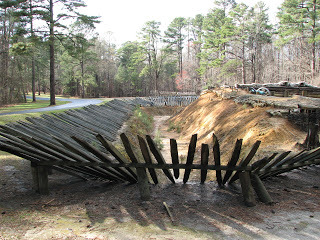 An example of the trenches at Petersburg National Battlefield Park.
An example of the trenches at Petersburg National Battlefield Park.
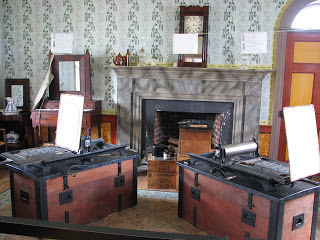 Thousands of Confederate paroles were printed after Lee's surrender. Appomattox Court House National Historical Park Visit the museum shop and book store at the Visitor Center. Books cover an amazing range of Civil War subjects-- there is something for everyone's interests.Find the donation box and slip in a few dollars. Help support these important sites of our nation's history! What Civil War battlefields have you visited?
Thousands of Confederate paroles were printed after Lee's surrender. Appomattox Court House National Historical Park Visit the museum shop and book store at the Visitor Center. Books cover an amazing range of Civil War subjects-- there is something for everyone's interests.Find the donation box and slip in a few dollars. Help support these important sites of our nation's history! What Civil War battlefields have you visited?
I'm working hard on a new middle grade book about Robert E. Lee! As part of my research, this past spring I visited Lee sites across Virginia including four Civil War battlefields. I've visited many such places over the years and find them beautiful and haunting. Today, it's difficult to remember the suffering and carnage that happened on these battlefields. They are lovely places to stroll or hike. But let's not forget the real stories of what happened.
 Pondering things at the McLean House where Lee surrendered.
Pondering things at the McLean House where Lee surrendered.Appomattox Court House National Historical Park.
 Manassas National Battlefield Park where two major battles took place.
Manassas National Battlefield Park where two major battles took place.Here are a few tips for taking in the history of these national treasures.
Before you go, check out the park's website for plenty of information, including things you can do with your kids. Search the calendar for special events like living history demonstrations and meeting historic interpreters. Start at the visitor center. Stroll through the museums, watch the orientation films about the events that took place all around you, engage with fiber-optic maps. Talk to the park rangers at the desk. Pick up a map, get downloadable apps. Find out what programs and ranger-led walks are happening that day. These ranger programs and walks are excellent ways to learn the stories of the battles and the people involved, both soldiers and the civilians. There are also science and nature related things to do at the parks.Take a self-guided car tour. In some places you can purchase a CD for this. The battlefields are big and spread out-- thousands of men camped, fought, and died at these places. Stop at designated spots along the driving route. Take a walk, read the markers that show what happened right where you are standing. You'll get a sense for how troops moved through the day, how armies clashed on multiple fronts, and how battles ebbed and flowed as reinforcements arrived or armies fell back. Before your visit, you can also book a personal tour guide for several hours or for most of the day. Check the parks website. Guides can be found through outside groups or booked through the museum shops at the park. You can really immerse yourself in the tour which can often be tailored to fit your interests, so it is well worth the money.
 An example of the trenches at Petersburg National Battlefield Park.
An example of the trenches at Petersburg National Battlefield Park.
 Thousands of Confederate paroles were printed after Lee's surrender. Appomattox Court House National Historical Park Visit the museum shop and book store at the Visitor Center. Books cover an amazing range of Civil War subjects-- there is something for everyone's interests.Find the donation box and slip in a few dollars. Help support these important sites of our nation's history! What Civil War battlefields have you visited?
Thousands of Confederate paroles were printed after Lee's surrender. Appomattox Court House National Historical Park Visit the museum shop and book store at the Visitor Center. Books cover an amazing range of Civil War subjects-- there is something for everyone's interests.Find the donation box and slip in a few dollars. Help support these important sites of our nation's history! What Civil War battlefields have you visited?
Published on August 02, 2017 11:39
July 1, 2017
Un BEE-lievable! Learn about the Buzz.....
 The bee holding box is on the far right.
The bee holding box is on the far right.The vacuum doesn't harm them!
Last month I noticed what looked like bees floating in and out of a hole in my house. I called a friend who happens to be a bee expert. Sure enough, these were bees, and I hired him to take a look and see what was abuzz.These snaps and videos show what he found in the floor of my daughter's old bedroom--a hive about six weeks old. It took all day for two men to tear up the rug, listen for bees with a stethoscope, smoke the bees to make them sleepy, trim away the floor, and then remove the hive.
The bee vacuum you see gently swept the bees into a holding box to keep them safe. Wow...I was blown away!
The background noise is the bee vacuum. Even during lunch break, the vacuum ran in order to keep them air-cooled in their holding box.
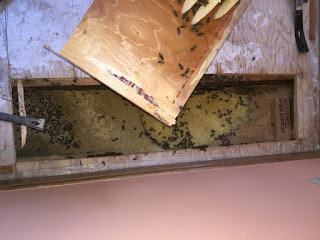 The hive was shaped exactly to fit a space under the floor. Birds had pulled away insulation and nested in their last year or so -- thanks to a hole made by a woodpecker sometime before that! Mother Nature at work in my house....
The hive was shaped exactly to fit a space under the floor. Birds had pulled away insulation and nested in their last year or so -- thanks to a hole made by a woodpecker sometime before that! Mother Nature at work in my house....
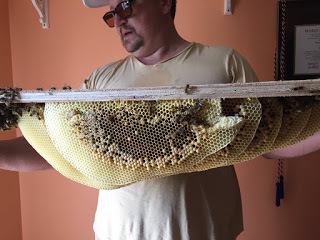 Once the hive was collected and all the bees removed, the beekeeper drove to another neighborhood where the hive found its new home. Isn't that cool?
Once the hive was collected and all the bees removed, the beekeeper drove to another neighborhood where the hive found its new home. Isn't that cool?[image error]
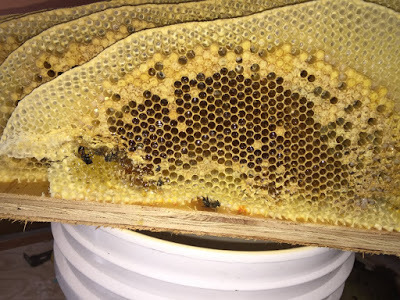 The damp stuff is nectar in the hive!
The damp stuff is nectar in the hive! [image error] Blogger Jeff Bogle has a fun "Honeybee Smelling Activity" to do with youngsters at PBS Kids... http://www.pbs.org/parents/adventures-in-learning/2015/05/honey-bee-smelling-activity/
What's more, check out this colonial pastime developed by my co-blogger Brandon Marie Miller for George Washington for Kids! [image error]
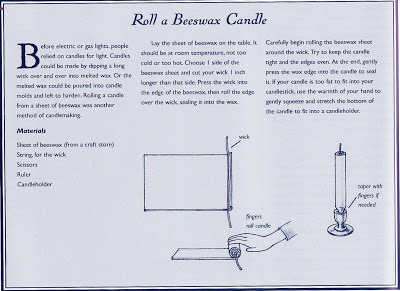
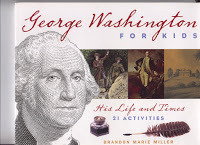
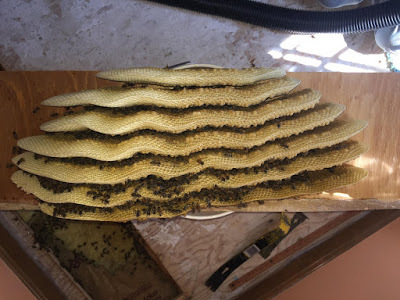
Published on July 01, 2017 14:26
June 4, 2017
Backyard Nature Science Activities for Summer Fun
The following is a guest post post from author Colleen Kessler.
Getting your kids outside as often as possible can go a long way towards improving moods, creativity, and can even make them smarter. For real! In his books, Last Child in the Woods and Vitamin N, Richard Louv shares research that details the innumerable benefits of getting outside and enjoying nature.
Summer is the perfect time to get outside with your kids.
The cool thing is that you don’t have to take your kiddos hiking in the woods, riding the rapids, or climbing mountains to give them the benefits of nature. You can do so many thing with them in your own backyard — yes… even if you’re a city family and backyard means the lot behind your apartment building.
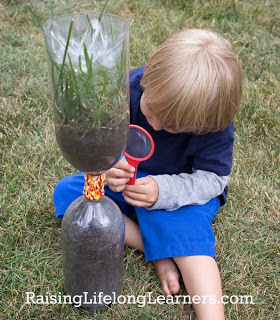
There are always things to explore.
In my new book, 100 Backyard Activities That Are the Dirtiest, Coolest, Creepy-Crawliest Ever! I share super-simple ways that your kids can become backyard biologists and learn loads and loads about the nature found all around them. Most of the activities can be done with simple things you’ll easily find around your house, and the kids can even do them themselves — giving you time to catch up on your summer reading while they’re happily engaged.
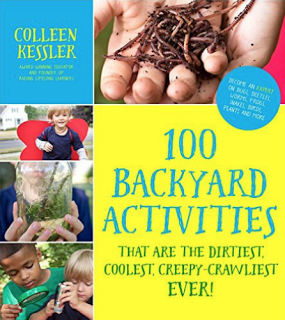
Check out some of these fun ideas from the book:Juice Pouch GardensButterfly Feeding StationEpic Mirror Observation BoxContainer Lid butterfly Feeder
Those are just a small sampling of the activities your kiddos will find to keep them busy all summer long in the book. They’ll spend a chapter learning all about being a backyard biologist and what it means to observe carefully and engage in the scientific method. Then, they’ll become backyard entomologists, learning about bugs of all sorts. They’ll try their hand at backyard herpetology, ornithology, and ecology too.
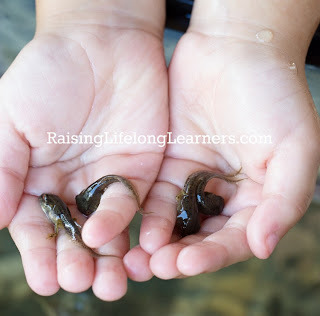
Seriously, hand them this book, give them access to a bunch of recyclables, and then sit back while they learn all about biology without leaving their own backyard — summer fun AND learning all rolled into one.
Getting your kids outside as often as possible can go a long way towards improving moods, creativity, and can even make them smarter. For real! In his books, Last Child in the Woods and Vitamin N, Richard Louv shares research that details the innumerable benefits of getting outside and enjoying nature.
Summer is the perfect time to get outside with your kids.
The cool thing is that you don’t have to take your kiddos hiking in the woods, riding the rapids, or climbing mountains to give them the benefits of nature. You can do so many thing with them in your own backyard — yes… even if you’re a city family and backyard means the lot behind your apartment building.

There are always things to explore.
In my new book, 100 Backyard Activities That Are the Dirtiest, Coolest, Creepy-Crawliest Ever! I share super-simple ways that your kids can become backyard biologists and learn loads and loads about the nature found all around them. Most of the activities can be done with simple things you’ll easily find around your house, and the kids can even do them themselves — giving you time to catch up on your summer reading while they’re happily engaged.

Check out some of these fun ideas from the book:Juice Pouch GardensButterfly Feeding StationEpic Mirror Observation BoxContainer Lid butterfly Feeder
Those are just a small sampling of the activities your kiddos will find to keep them busy all summer long in the book. They’ll spend a chapter learning all about being a backyard biologist and what it means to observe carefully and engage in the scientific method. Then, they’ll become backyard entomologists, learning about bugs of all sorts. They’ll try their hand at backyard herpetology, ornithology, and ecology too.

Seriously, hand them this book, give them access to a bunch of recyclables, and then sit back while they learn all about biology without leaving their own backyard — summer fun AND learning all rolled into one.
Published on June 04, 2017 21:56
May 1, 2017
Plant a Garden
by Brandon Marie Miller
Ah, spring. Trees bloom and leaf out, flowers dot gardens with color. Thunderstorms rumble and sometimes, even a bit of late snow flies. As life renews itself in spring, my mind jumps ahead to summer gardens-- Flowers, fruits and veggies.
When I researched my biographies of George Washington and Thomas Jefferson I learned how much both men loved their gardens. They ordered bulbs and seeds from Europe, traded plants with friends and grafted plants together to create new ones. Both GW and TJ grew a huge variety of vegetables and herbs. Jefferson experimented with 330 varieties of more than 70 types of vegetables. Washington planted cherry, fig, apple and pear trees as well as trees of pecan and hickory nuts.
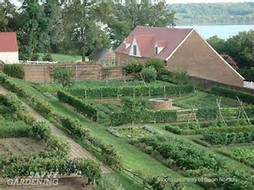 Kitchen garden at George Washington's home, Mount VernonAre you ready to get your hands dirty? We have several blogs about gardening-- check them all out! See my blog from February, 2014 to learn how to grow a plant from a cutting. Check out the activity below-- PLANT A GARDEN-- and try out your green thumb!
Kitchen garden at George Washington's home, Mount VernonAre you ready to get your hands dirty? We have several blogs about gardening-- check them all out! See my blog from February, 2014 to learn how to grow a plant from a cutting. Check out the activity below-- PLANT A GARDEN-- and try out your green thumb!
 Garden path at Jefferson's home, Monticello
Garden path at Jefferson's home, Monticello
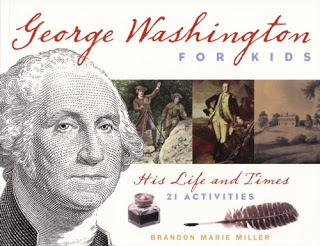
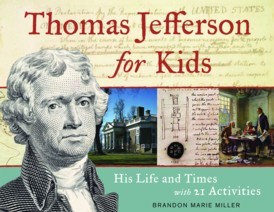
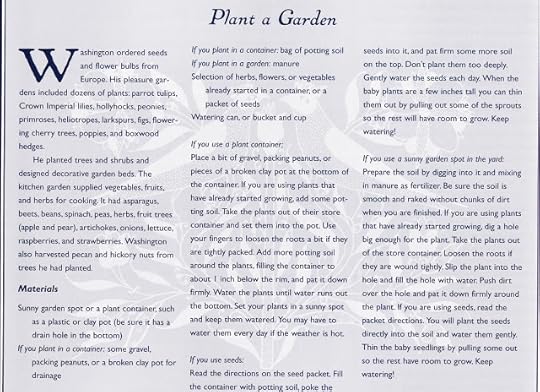
Ah, spring. Trees bloom and leaf out, flowers dot gardens with color. Thunderstorms rumble and sometimes, even a bit of late snow flies. As life renews itself in spring, my mind jumps ahead to summer gardens-- Flowers, fruits and veggies.
When I researched my biographies of George Washington and Thomas Jefferson I learned how much both men loved their gardens. They ordered bulbs and seeds from Europe, traded plants with friends and grafted plants together to create new ones. Both GW and TJ grew a huge variety of vegetables and herbs. Jefferson experimented with 330 varieties of more than 70 types of vegetables. Washington planted cherry, fig, apple and pear trees as well as trees of pecan and hickory nuts.
 Kitchen garden at George Washington's home, Mount VernonAre you ready to get your hands dirty? We have several blogs about gardening-- check them all out! See my blog from February, 2014 to learn how to grow a plant from a cutting. Check out the activity below-- PLANT A GARDEN-- and try out your green thumb!
Kitchen garden at George Washington's home, Mount VernonAre you ready to get your hands dirty? We have several blogs about gardening-- check them all out! See my blog from February, 2014 to learn how to grow a plant from a cutting. Check out the activity below-- PLANT A GARDEN-- and try out your green thumb! Garden path at Jefferson's home, Monticello
Garden path at Jefferson's home, Monticello


Published on May 01, 2017 08:02
March 5, 2017
Women and World War I
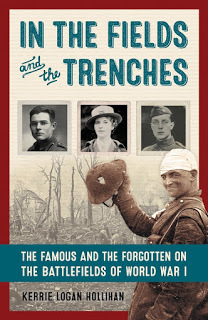 Next month marks 100 years since the United States went to war again Germany and the other members of the Central Powers in the Great War – later called World War I. This month, we celebrate Women’s History Month. Hence my post: to introduce five young women whose war stories I share in In the Fields and the Trenches: The Famous and the Forgotten on the Battlefields of World War I.
Next month marks 100 years since the United States went to war again Germany and the other members of the Central Powers in the Great War – later called World War I. This month, we celebrate Women’s History Month. Hence my post: to introduce five young women whose war stories I share in In the Fields and the Trenches: The Famous and the Forgotten on the Battlefields of World War I. 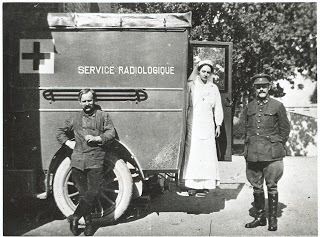
Irène Curie,daughter of the groundbreaking physicist Marie Curie, served as an x-ray technician along the Western Front, driving her “petite Curie” vehicle with portable x-ray equipment to diagnose soldiers’ injuries. Still in her teens, she confronted both the French Army and its doctors in order to carry out her work.
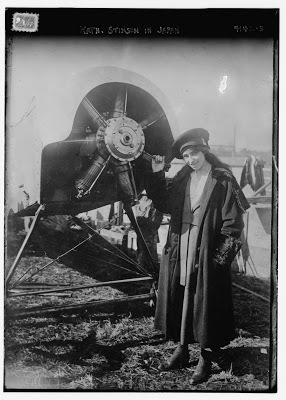
Katherine Stinson Otero, America’s “Flying Schoolgirl” crisscrossed the US and Canada in her plane to entertain crowds and sell Liberty Bonds. She ached to fly for the US Army but was forced to settle for driving an ambulance in France.
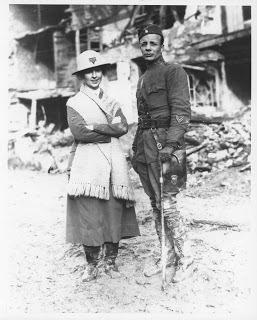 Eleanor Butler Roosevelt, wife of Theodore Roosevelt Jr., ran a YMCA for American doughboys in Paris. She was one of few American wives allowed to serve in France.
Eleanor Butler Roosevelt, wife of Theodore Roosevelt Jr., ran a YMCA for American doughboys in Paris. She was one of few American wives allowed to serve in France.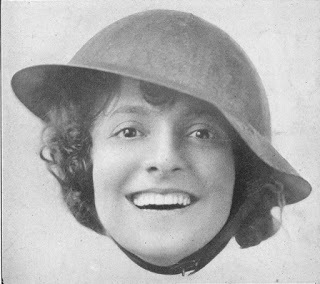
Elsie Janis, a famous actress, raised her own money to tour France to entertain the troops, whom she lovingly termed “my boys.” She once arrived at a show standing on the cowcatcher of a locomotive. (My Aunt Jan was named for Elsie.)
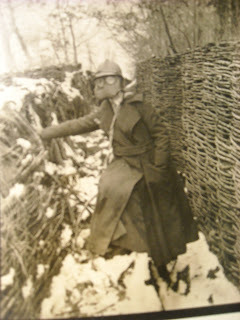 Helen Johns Kirtland, American photographer who went to the trenches on her honeymoon and snapped memorable photos of the war and peacemaking afterward.
Helen Johns Kirtland, American photographer who went to the trenches on her honeymoon and snapped memorable photos of the war and peacemaking afterward..
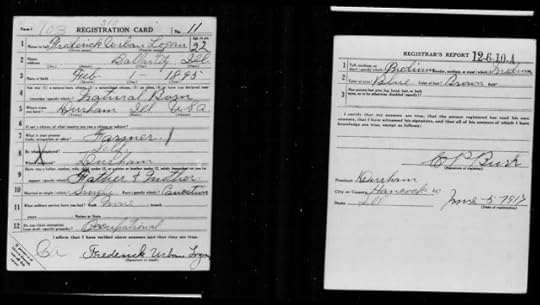
I’m sharing an easy activity: tap—or point and click—your way to some top websites on World War I. Imagine my surprise when I looked at Grandpa's draft card—it's transcribed incorrectly. Frederick Corban Logan, as recorded, was actually Frederick Urban Logan. Someone at the National Archives couldn’t read old fashioned cursive!
Library of Congress portal https://www.loc.gov/topics/world-war-i/
“World War I: Online Offerings” from the March/April 2017 Library of Congress Magazine https://blogs.loc.gov/loc/2017/02/world-war-i-online-offerings/
100: First World War (United Kingdom) http://nationalarchives.gov.uk/first-world-war/
The National Educational Assoc. offers a wide-ranging set of links to useful website to help target your research http://www.nea.org/tools/lessons/60045.htm/
A private individual has built FirstWorldWar.com/, admittedly non-academic but worthwhile. http://www.firstworldwar.com/about.htm/
Take a family trip down memory lane by ordering the war record of your World War I soldier: https://www.archives.gov/research/military/ww1
Find your loved one’s draft card here: https://familysearch.org/search/collection/1968530
Published on March 05, 2017 13:44
January 31, 2017
Eve, Tracing The Life of An Enslaved Woman
by Brandon Marie Miller
[Activity: Search Runaway Slave Advertisements]
Eve was an enslaved woman owned by Peyton Randolph in Williamsburg, Virginia. Her master was set to serve in the Second Continental Congress in Philadelphia when he died in October 1775. As delegates gathered to discuss how Great Britain had enslaved the American colonists, Randolph's will was read. Randolph bequeathed possessions and land to his wife Elizabeth. He left her other important property, as well: "Little Aggy & her children, Great Aggy & her children, Eve & her children, Lucy & her children to her and her heirs forever."
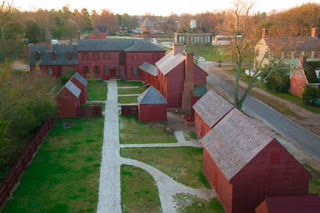 The Randolph house and outbuildings in Williamsburg, Virginia
The Randolph house and outbuildings in Williamsburg, Virginia
Eve was a valuable slave, worth 100 pounds, a sum that spoke to her training and skills. She probably worked as Elizabeth Randolph's personal maid. She sewed and mended, dressed her mistress, lit the fires, ran errands, and relayed Mrs. Randolph's instructions. Eve was on call 24/7 and probably slept outside the Randolph's bedroom door, or maybe even in the bedroom.
As British authority crumbled in the colonies, many royal governors fled, including John Murray, Lord Dunmore, of Virginia. Before he escaped to a British warship, Dunmore issued a proclamation in November 1775. He promised freedom to indentured servants and slaves who left rebel masters and who "are able and willing to bear Arms, they joining His Majesty's Troops."
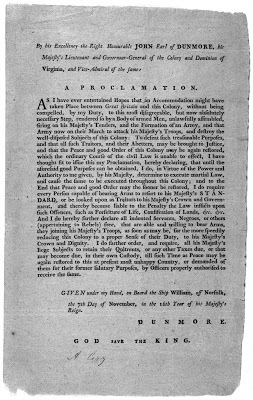 Lord Dunmore's Proclamation
Lord Dunmore's Proclamation
Virginia Memory, Library of Congress
Dunmore's Proclamation did not include the old, sick, women, children or slaves of loyal colonists. But thousands of Virginia's enslaved, including Eve and seven others in the Randolph household, took a chance for freedom. By July, 1776, however, four of the runaways had either been caught and returned or forced back by an outbreak of smallpox in Dunmore's crowded camp. Eve was one of the people returned to Elizabeth Randolph. In 1780 Elizabeth wrote her will, and along with silver candlesticks, blankets, and curtains, wrote, "I give to my niece Ann Copland a Negro woman named Eve and her son George to her use and after her death to her Heirs." [Learn more about Elizabeth Randolph's will at
http://www.history.org/almanack/people/bios/bioran.cfm]
As Americans fought a war for liberty, slaves remained in bondage. In October, 1781, Eve ran away again with her fifteen-year-old son. They fled to British general Lord Charles Cornwallis's army at Yorktown, only a few miles from Williamsburg. Here, George Washington's army, aided by French troops and ships, defeated Cornwallis. As British supplies dwindled, the redcoats drove runaway slaves out from behind British lines. Thomas Jefferson estimated 30,000 enslaved people had run to Cornwallis, and out of these, 27,000 died of disease.
Eve survived. But George may have died. He isn't mentioned in an advertisement Mrs. Randolph's nephew placed in a Virginia paper in February, 1782: "TWENTY DOLLARS REWARD FOR apprehending EVE, a Negro Woman slave, who left York after the surrender; she is about forty years old, very black and slender, has a small mouth for a Negro, and a remarkable mole on her nose...."
Eve's escape to freedom was short lived. Between the February 1782 advertisement and July 20, 1782, Eve was caught and returned to Elizabeth Randolph. On that July date, Elizabeth added a codicil to her will. "Whereas Eve's bad behavior laid me under the necessity of selling her. I order and direct the money she sold for may be laid out in purchasing two negroes Viz, a Boy & Girl I give to my niece Ann Copland in lieu of Eve, in the same manner that I had given Eve."
Eve's two attempts to run away, though sadly unsuccessful, prove how strong was an enslaved human being's desire for freedom.
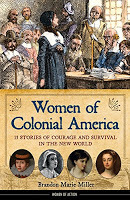 Read more about Eve and other enslaved women in my book
Read more about Eve and other enslaved women in my book
Women of Colonial America, a New York Public Library Best Book For Teens
ACTIVITY: Try reading some selections of runaway advertisements in colonial Virginia. What do they have in common? Description of the enslaved? How much reward is offered? The name of the person placing the ad (the subscriber)? Clues to where the runaway might be found? How is the enslaved person shown as a piece of property?
http://nationalhumanitiescenter.org/pds/maai/enslavement/text8/virginiarunawayads.pdf
[Activity: Search Runaway Slave Advertisements]
Eve was an enslaved woman owned by Peyton Randolph in Williamsburg, Virginia. Her master was set to serve in the Second Continental Congress in Philadelphia when he died in October 1775. As delegates gathered to discuss how Great Britain had enslaved the American colonists, Randolph's will was read. Randolph bequeathed possessions and land to his wife Elizabeth. He left her other important property, as well: "Little Aggy & her children, Great Aggy & her children, Eve & her children, Lucy & her children to her and her heirs forever."
 The Randolph house and outbuildings in Williamsburg, Virginia
The Randolph house and outbuildings in Williamsburg, VirginiaEve was a valuable slave, worth 100 pounds, a sum that spoke to her training and skills. She probably worked as Elizabeth Randolph's personal maid. She sewed and mended, dressed her mistress, lit the fires, ran errands, and relayed Mrs. Randolph's instructions. Eve was on call 24/7 and probably slept outside the Randolph's bedroom door, or maybe even in the bedroom.
As British authority crumbled in the colonies, many royal governors fled, including John Murray, Lord Dunmore, of Virginia. Before he escaped to a British warship, Dunmore issued a proclamation in November 1775. He promised freedom to indentured servants and slaves who left rebel masters and who "are able and willing to bear Arms, they joining His Majesty's Troops."
 Lord Dunmore's Proclamation
Lord Dunmore's ProclamationVirginia Memory, Library of Congress
Dunmore's Proclamation did not include the old, sick, women, children or slaves of loyal colonists. But thousands of Virginia's enslaved, including Eve and seven others in the Randolph household, took a chance for freedom. By July, 1776, however, four of the runaways had either been caught and returned or forced back by an outbreak of smallpox in Dunmore's crowded camp. Eve was one of the people returned to Elizabeth Randolph. In 1780 Elizabeth wrote her will, and along with silver candlesticks, blankets, and curtains, wrote, "I give to my niece Ann Copland a Negro woman named Eve and her son George to her use and after her death to her Heirs." [Learn more about Elizabeth Randolph's will at
http://www.history.org/almanack/people/bios/bioran.cfm]
As Americans fought a war for liberty, slaves remained in bondage. In October, 1781, Eve ran away again with her fifteen-year-old son. They fled to British general Lord Charles Cornwallis's army at Yorktown, only a few miles from Williamsburg. Here, George Washington's army, aided by French troops and ships, defeated Cornwallis. As British supplies dwindled, the redcoats drove runaway slaves out from behind British lines. Thomas Jefferson estimated 30,000 enslaved people had run to Cornwallis, and out of these, 27,000 died of disease.
Eve survived. But George may have died. He isn't mentioned in an advertisement Mrs. Randolph's nephew placed in a Virginia paper in February, 1782: "TWENTY DOLLARS REWARD FOR apprehending EVE, a Negro Woman slave, who left York after the surrender; she is about forty years old, very black and slender, has a small mouth for a Negro, and a remarkable mole on her nose...."
Eve's escape to freedom was short lived. Between the February 1782 advertisement and July 20, 1782, Eve was caught and returned to Elizabeth Randolph. On that July date, Elizabeth added a codicil to her will. "Whereas Eve's bad behavior laid me under the necessity of selling her. I order and direct the money she sold for may be laid out in purchasing two negroes Viz, a Boy & Girl I give to my niece Ann Copland in lieu of Eve, in the same manner that I had given Eve."
Eve's two attempts to run away, though sadly unsuccessful, prove how strong was an enslaved human being's desire for freedom.
 Read more about Eve and other enslaved women in my book
Read more about Eve and other enslaved women in my bookWomen of Colonial America, a New York Public Library Best Book For Teens
ACTIVITY: Try reading some selections of runaway advertisements in colonial Virginia. What do they have in common? Description of the enslaved? How much reward is offered? The name of the person placing the ad (the subscriber)? Clues to where the runaway might be found? How is the enslaved person shown as a piece of property?
http://nationalhumanitiescenter.org/pds/maai/enslavement/text8/virginiarunawayads.pdf
Published on January 31, 2017 08:44
January 4, 2017
Mission to Pluto is a Starred Success!
Published on January 04, 2017 09:37
December 17, 2016
Christmas Cakes in the TrenchesFrom the Library of Congre...
Christmas Cakes in the Trenches
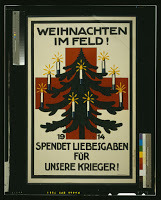 From the Library of Congress: Poster shows a Christmas tree decorated with candles in front of a red cross. Text: Christmas in the field! 1914. Donate gift packages for our warriors!When Europe went to war in the fall of 1914, many were sure that soldiers on both sides would be "home by Christmas." Then the first ugly battles took place, and that thinking changed. World War I would see not one but four Christmases, and many soldiers were still in France and Germany for the Christmas after Armistice Day in 1918.
From the Library of Congress: Poster shows a Christmas tree decorated with candles in front of a red cross. Text: Christmas in the field! 1914. Donate gift packages for our warriors!When Europe went to war in the fall of 1914, many were sure that soldiers on both sides would be "home by Christmas." Then the first ugly battles took place, and that thinking changed. World War I would see not one but four Christmases, and many soldiers were still in France and Germany for the Christmas after Armistice Day in 1918.
British "Tommies" received Christmas cakes from home, recipe reflecting wartime rationing plus the need for these cakes to survive the trip to the trenches. Hence the Trench Cake, egg-free and as every fruitcake eater knows, indestructible.
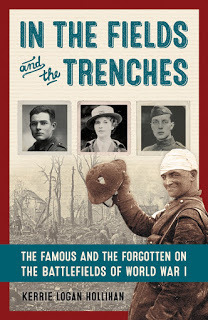 I follow up on these Tommies, American Doughboys, French nurses and more in my latest
I follow up on these Tommies, American Doughboys, French nurses and more in my latest
book on the Great War. Pick it up from your library or bookstore. Reviews are posted here: www.kerriehollihan.com/
"....An ideal introductory work about the war, and even adults well read in the subject may find this of interest." --New York Military Affairs Symposium Review
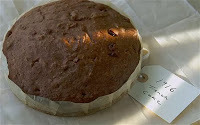 How to bake a First World War trench cake - Telegraph http://www.telegraph.co.uk/history/world-war-one/10905975/How-to-bake-a-First-World-War-trench-cake.html
How to bake a First World War trench cake - Telegraph http://www.telegraph.co.uk/history/world-war-one/10905975/How-to-bake-a-First-World-War-trench-cake.html
 From the Library of Congress: Poster shows a Christmas tree decorated with candles in front of a red cross. Text: Christmas in the field! 1914. Donate gift packages for our warriors!When Europe went to war in the fall of 1914, many were sure that soldiers on both sides would be "home by Christmas." Then the first ugly battles took place, and that thinking changed. World War I would see not one but four Christmases, and many soldiers were still in France and Germany for the Christmas after Armistice Day in 1918.
From the Library of Congress: Poster shows a Christmas tree decorated with candles in front of a red cross. Text: Christmas in the field! 1914. Donate gift packages for our warriors!When Europe went to war in the fall of 1914, many were sure that soldiers on both sides would be "home by Christmas." Then the first ugly battles took place, and that thinking changed. World War I would see not one but four Christmases, and many soldiers were still in France and Germany for the Christmas after Armistice Day in 1918.British "Tommies" received Christmas cakes from home, recipe reflecting wartime rationing plus the need for these cakes to survive the trip to the trenches. Hence the Trench Cake, egg-free and as every fruitcake eater knows, indestructible.
 I follow up on these Tommies, American Doughboys, French nurses and more in my latest
I follow up on these Tommies, American Doughboys, French nurses and more in my latestbook on the Great War. Pick it up from your library or bookstore. Reviews are posted here: www.kerriehollihan.com/
"....An ideal introductory work about the war, and even adults well read in the subject may find this of interest." --New York Military Affairs Symposium Review
 How to bake a First World War trench cake - Telegraph http://www.telegraph.co.uk/history/world-war-one/10905975/How-to-bake-a-First-World-War-trench-cake.html
How to bake a First World War trench cake - Telegraph http://www.telegraph.co.uk/history/world-war-one/10905975/How-to-bake-a-First-World-War-trench-cake.html
Published on December 17, 2016 12:04

